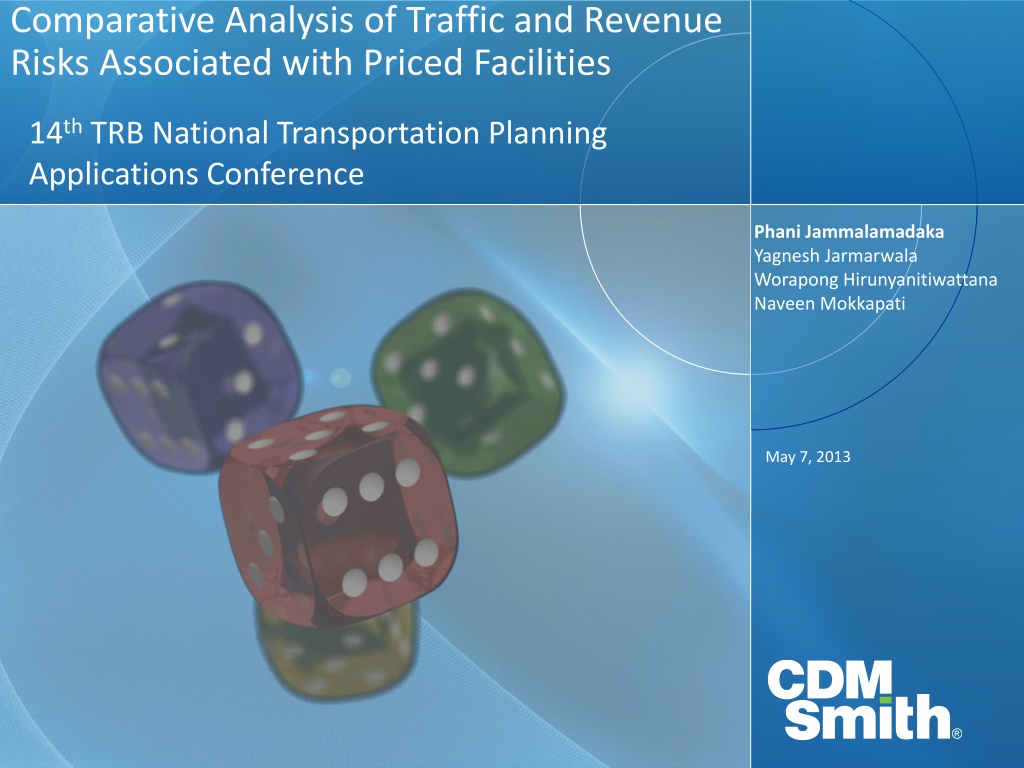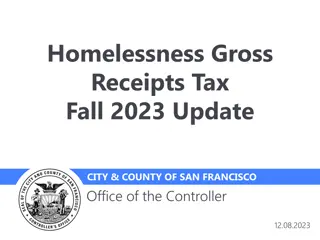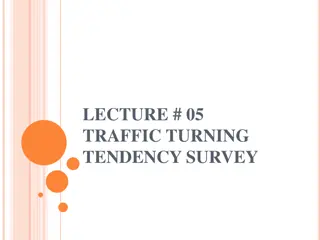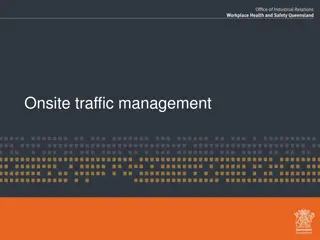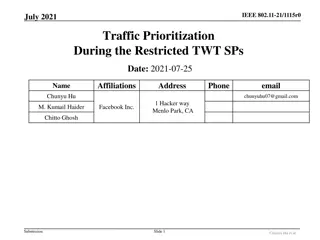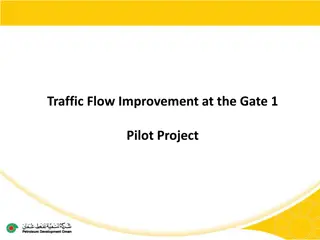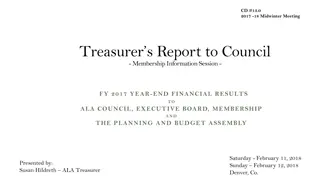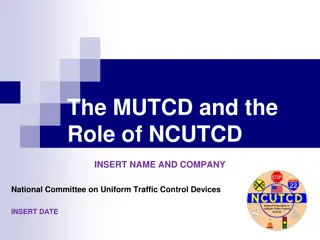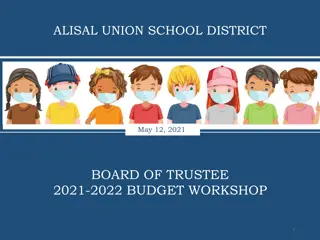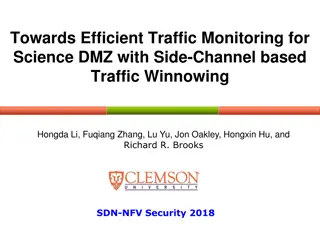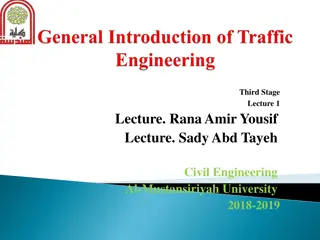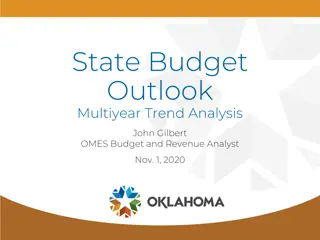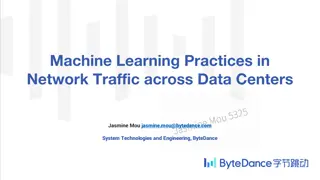Comparative Analysis of Traffic and Revenue Risks in Priced Facilities
This presentation at the 14th TRB National Transportation Planning Applications Conference discusses the background, process, and importance of sensitivity and risk analysis in traffic and revenue forecasts for toll road projects. It covers how risk analysis helps quantify uncertainties, determine impacts on outputs, and analyze sensitivities to evolve the estimation process. The presentation emphasizes the use of sensitivity analyses and stress tests to accommodate risks in demand and revenue forecasts. Risk analysis processes involve determining uncertainty distributions, modeling input-output relationships, and estimating output ranges using simulations like Monte Carlo. Challenges in risk analysis include selecting variables, quantifying uncertainties, and avoiding misleading conclusions from extreme events.
Download Presentation

Please find below an Image/Link to download the presentation.
The content on the website is provided AS IS for your information and personal use only. It may not be sold, licensed, or shared on other websites without obtaining consent from the author. Download presentation by click this link. If you encounter any issues during the download, it is possible that the publisher has removed the file from their server.
E N D
Presentation Transcript
Comparative Analysis of Traffic and Revenue Risks Associated with Priced Facilities 14thTRB National Transportation Planning Applications Conference Phani Jammalamadaka Yagnesh Jarmarwala Worapong Hirunyanitiwattana Naveen Mokkapati May 7, 2013
Outline Background Traffic/Transactions and Revenue (T&R) process Sensitivity analysis Risk analysis Discussion on uncertainty in T&R Case studies Summary/next steps 2
Background Traffic and revenue (T&R) forecasts - typically point estimates Bond investors, rating agencies, etc. prefer rigorous sensitivity/risk assessments in toll road T&R forecasts Risk analysis helps to Quantify uncertainties in inputs Determine impacts of inputs on output Analyze output sensitivities Quantify uncertainties of the output Multi-agency toll project financing negotiations Evolving risk analysis processes in T&R estimation
Sensitivity Analysis Demonstrate impacts of changes to inputs Determine most and least influential inputs Test impacts of extreme events Estimate reasonable high and low Typically not a time-intensive process Variable 6 0.10 Variable 5 0.20 Variable 4 -0.30 Variable 3 0.34 A relatively common and reasonably effective method for accommodating risk in demand and revenue forecasts is the use of sensitivity analyses or stress tests (Kriger et al., 2006) Variable 2 0.55 Variable 1 -0.60 -0.8 -0.6 -0.4 -0.2 0.0 0.2 0.4 0.6 0.8 Elasticity 7
Risk Analysis Typical Process Determine uncertainty distributions of inputs Model relationship between inputs and outputs Estimate output ranges/probabilities using multiple simulations (Monte Carlo) Sensitivities/elasticities are a by-product of risk analysis Challenges (in T&R risk analysis) Variables to include in risk analysis and correlations Quantification of uncertainty of inputs not easy Could lead to misleading conclusions Variables used for risk analysis Extreme events
Select Uncertainty Factors Demographics (Population, Employment) Weather Value of time (Income) Accidents Vehicle operating cost (Gas prices) Construction activity Toll rates Feeder/Competing routes Trip generation rates Congestion management policies Revenue days (Weekend/Weekday traffic) Travel Demand Modeling Factors Toll revenue recovery Truck traffic shares Toll transponder usage
Uncertainty Propagation Through TDM According to Zhao and Kockelman (2002) Uncertainty grows through trip generation, trip distribution and mode choice models Uncertainty drops at the traffic assignment model Final flow uncertainties higher than levels of input uncertainties More difficult to anticipate flows on uncongested networks 10
Case Study #1 - Overview Sub Area Network Urban area highway model AM, PM and OP time periods 741 Zones (including 116 External Zones) 4667 Roadway Links 3106 Nodes 816 Zone Connectors Assumptions Validated travel demand model Commuter corridor High toll transponder participation Market share based toll diversion algorithm No congestion pricing Mostly developed corridor (Brownfield corridor) Growth in trips to 2030 (1.6% annual growth) No transportation improvements through 2030 Toll Road Freeways Arterials
T&R Risk Analysis Process Trip Generation Trip Distribution Modal Split Toll Assignment Develop Sub area Model Develop input distributions (Population, Employment, Value of time, Toll rates, Vehicle operating costs) Regression model to forecast daily traffic/transactions Monte Carlo simulation (1000 runs) to obtain traffic/transaction distribution Transaction Probability Analysis Develop distributions for input variables (Revenue days, Truck shares, Transponder shares, Toll rates) Regression model to forecast revenue Monte Carlo simulation (1000 runs) to obtain revenue distribution Revenue Probability Analysis 13
Uncertainties in Input Variables Revenue Variables Transaction Variables Truck Shares (based on observed trends on similar toll facilities) Population (Census vs. Forecast) Employment (Census vs. Forecast) Revenue Days (based on observed trends on similar toll facilities) VOT (SP Survey, CPI) Transponder Shares (based on observed trends on similar toll facilities) Toll Rates, Vehicle Operating Costs (AAA, CPI) General Uncertainty/Safety Factor 14 14
Traffic Sensitivity Analysis Summary 2011 2030 4.0% 15.0% 3.0% 10.0% 2.0% 5.0% 1.0% 0.0% 0.0% P5 P25 P50 P75 P95 -1.0% P5 P25 P50 P75 P95 -5.0% -2.0% -10.0% -3.0% -15.0% -4.0% -5.0% Population Employment Value of Time Population Employment Value of Time VOC Toll Rates VOC 15
Revenue Sensitivity Analysis Summary 2030 2030 40.0% 1.5% 30.0% 1.0% 20.0% 0.5% 10.0% 0.0% 0.0% P5 P25 P50 P75 P95 P5 P25 P50 P75 P95 -10.0% -0.5% -20.0% -1.0% -30.0% -40.0% -1.5% Toll_Rate Revenue_Days Truck% TollTag% 16
T&R Uncertainties Traffic Distributions Year Lower Bound (P5) Mean Upper Bound (P95) 2011 96 100 104 2030 80 100 122 Revenue Distributions Year Lower Bound (P5) Mean Upper Bound (P95) 2011 83 100 111 2030 69 100 141 17
Sensitivity & Traffic/Transaction Probabilities 1.0 10 year Demographic Lag P5 of Population 0.8 P95 of Population Toll Rates inflation of 5% per year Probability 0.6 0.4 Probability ~ 23% 0.2 P95 of VOC P5 of VOC 0.0 10% 20% 30% 40% -40% -30% -20% -10% 0% Percent Change from Mean Transactions 18
Sensitivity & Revenue Probabilities 1.0 10% increase in Revenue days 100% increase in Truck Shares P5 for Toll Rates 0.8 P95 for Toll Rates 50% decrease in Revenue Recovery 0.6 Probability P95 for Revenue days Probability ~ 44% 0.4 P5 for Revenue days 0.2 0.0 20% 40% 60% -60% -40% -20% 0% Percent Change from Mean Revenue 19
Case Study Model #2 Network Semi-urban area roadway model Daily model 600+ zones 16000+ Roadway Links 6000+ Nodes 3000+ Zone Connectors Assumptions Validated travel demand model New alternative river crossing Market share based toll diversion algorithm No congestion pricing Greenfield corridor Toll Bridge Freeways Arterials River 21
T&R Risk Analysis Process Trip Generation Trip Distribution Modal Split Toll Assignment Regional Demand Model Develop input distributions (Households, Value of time, Toll rates, Vehicle operating costs) Regression model to forecast daily traffic/transactions Monte Carlo simulation (1000 runs) to obtain traffic/transaction distribution by vehicle class Transaction Probability Analysis Develop distributions for input variables (CPI Growth) Regression model to forecast revenue by vehicle class as function of traffic, CPI growth and toll rates Monte Carlo simulation (1000 runs) to obtain revenue distribution by vehicle class Revenue Probability Analysis 22
Population Forecast Comparisons 480,000 460,000 440,000 420,000 400,000 Population 380,000 360,000 340,000 320,000 300,000 2005 2010 2015 2020 2025 2030 2035 2040 Source A Source B Source C Source D Source E 23
Uncertainties in Input Variables Transaction and Revenue Variables Households (Census vs. Forecast, Comparison of Multiple Forecasts) VOT (SP Survey, CPI) Toll Rates, Vehicle Operating Costs (AAA, CPI) General Uncertainty/Safety Factor 24
Sensitivity Test Results - Traffic 120.0% 120.0% 100.0% 100.0% Impact to Transactions Impact to Transactions 80.0% 80.0% 60.0% 60.0% 40.0% 40.0% 20.0% 20.0% 0.0% 0.0% -80.0% -60.0% -40.0% -20.0% 0.0% 20.0% 40.0% 60.0% -80.0% -60.0% -40.0% -20.0% 0.0% 20.0% 40.0% 60.0% -20.0% -20.0% Percentage Change of Variables Percentage Change of Variables -40.0% -40.0% Households Vehicle Operating Cost Value of Time Toll Rates Households Vehicle Operating Cost Value of Time Toll Rates 2035 2025 25
2025 Sensitivity and Transaction Probabilities Traffic/Transactions 1 Total Txns P50 Base Forecast HH -26% HH +23% VOC -50% VOC +50% VOT -15% VOT +18% Toll Rate -67% Toll Rate +33% 0.8 0.6 0.4 0.2 0 -50% -25% 0% 25% 50% 75% 100% 125% Percent Change from Mean 26
2025 Sensitivity and Revenue Probabilities Revenue 1 Total Revenue P50 0.8 Base Forecast CPI -32% 0.6 CPI +43% Toll Rate -67% Toll Rate +33% 0.4 0.2 0 0% 25% 50% -50% -25% Percent Change from Mean 27
Summary Quantification of T&R uncertainties very important given the inherent uncertainties/imperfections in inputs and models Possible ways to quantify T&R uncertainties Discrete sensitivity analysis Risk analysis to create probability ranges for the outputs Combined sensitivity analysis, risk analysis and extreme event impacts (recommended) Case studies Estimation of input variable uncertainties Estimation of T&R uncertainties using Monte Carlo simulations Sensitivity analyses, including extreme event impacts Approaches can vary based on type of facility, data and base models available 29
Next Steps Quantification of T&R risks associated with Trip rates Modal splits Trip distribution parameters Volume delay functions Revenue recovery rates Toll facility ramp-up factors Toll diversion algorithm impacts Extent of sub-area model Managed lane facilities 30
Questions? Phani Jammalamadaka, PE jammalamadakapr@cdmsmith.com Yagnesh Jarmarwala, PMP jarmarwalaym@cdmsmith.com Worapong Hirunyanitiwattana, PE hirunyanitiwattanaw@cdmsmith.com Naveen Mokkapati, PE mokkapatin@cdmsmith.com 31
